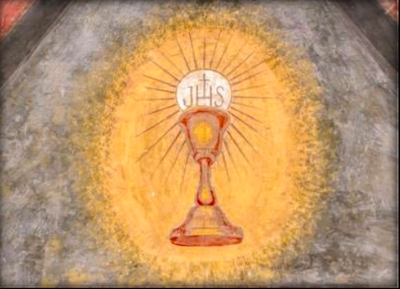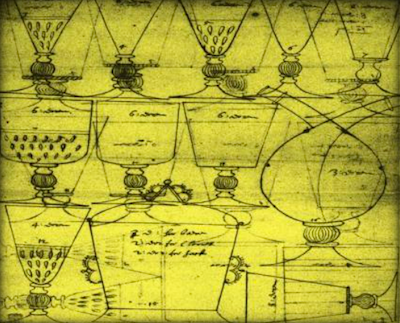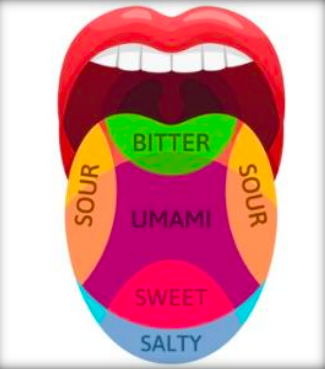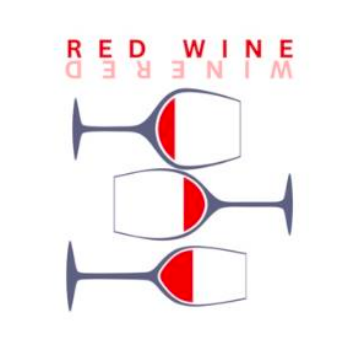
Click here for the full experience: the original pdf-formatted version of this article.
THE WINE GLASS
Joseph of Arimathea, the Holy Grail, and the Divine Grace
Book of Bertil 17.01
Introduction:
But in which glass should I drink this wine?
This is the fundamental question you must ask yourself, whether the ideal wine glass by its shape and quality is important so that you can commune and approach divine grace with the elixir of the gods it contains.
From Lancelot du Lac to Claus J. Riedel, Schott Zwiesel and Mikasa, they have all been in their respective times in search of the holistic holy glass. And then you, whom are you to believe? I offer you to discover in this blog, the origin and history of the wine glass, the reason for its shapes, its fundamental influence on your five senses, and if there is really a perfect wine glass for you in this world of appearance and fake news.
CHAPTER 1.0
17.1.1 The History of the Wine Glass
The wine glass begins its history around 1500 BC, while the Egyptians begin to use containers (cup) made from sand and potash, these are the first glasses of human manufacture. It was under the time of ancient Rome that glass was adopted by the empire because the technique of blown glass is finally mastered - but these glass cups were exclusively reserved for the wealthy; the lower classes still used metal or terracotta. It wasn’t until the fifteenth century with the invention of the “cristallo" in Italy that the island of Murano in Venice developed the technique of stylized glass. As for Bohemian crystal, glass of potash, it made its appearance in the eighteenth century and would allow the glass to finally be cut and engraved.

The technique will be refined at the end of the century by the arrival of lead glass, which made it more transparent and stronger. The real crystal, a mixture of coal, oxygen, and lead, was developed by G. Ranvenscott in London (again - the English!!).

Then England went on to dominate the market of lux glass until the Industrial Revolution at the end of the 19th century where glass became an object of common use. The wine glass, originally in the shape of a goblet, would discover its foot only around 1679 because of the "affair of poisons", and it is only in 1950 that the stem would make its appearance, thanks to Riedel. It wasn’t until 1970 that the shape referred to as “tulip” would be approved as the standard of the tasting glass, named now as we know it INAO - (Institut National d'Appellation d'Origine).The different shapes and volumes of wine glasses known today will only be intellectualized and ordered from the 50s by Claus Riedel for purely commercial reasons by the first creation of a range of glasses based on the character and style of wine.

17.1.2 Forms and Cultures
Why are there several (hundreds) shapes and sizes of wine glasses?
Much of the consumers’ choice of glass is based on myths surrounding their appearances. Yet there is a glass style for each style of wine. It is therefore important to understand your needs so as not to slip into emotion and end up with wine glasses inadequate to your needs. So, first before talking about the shapes of the glasses, let's dwell on the facts.
17.1.3 The Facts
The mouth does have the ability to smell or recognize a wine’s aromas because the function of your mouth and taste buds on your tongue only have the function of informing you of the volumes of what you introduce to it as well as the five tactile functions called chemical or palatability agents: sweet, salty, astringency (tannin), the acidity and umami. Chemically speaking, the perception of umami is stimulated by sodium glutamate, a molecule found naturally in meats, cheeses, ripe tomatoes, or soy sauce, etc.
There is a common myth that the tongue consists of specific regions recognizing the four chemical agents. At the back of the tongue, bitter; on both sides of the middle of the tongue, sour or acid; at the front, salty; and on the front tip of the tongue, sweet. But this map of tastes on the tongue does not, in fact, exist.

The indicated areas are correct, but on each of these areas we can perceive all five tastes. At the level of these areas are the papillae of the tongue, which contain the taste buds, themselves formed of cells responsible for the perception of taste. If each cell is dedicated to one taste among the five in each region of the tongue, we find the five types of cells in each of the buds. Despite their different abilities, the five cell types are morphologically very similar. In fact, they differ only in the presence of specific receptors on their surface. A receptor is a protein that is inserted into the cell membrane, and that can bind to a given molecule. Then the shape of the glass will only have the function of accentuating or reducing the specific chemical contact of a taste by the wine projected on specific parts of your oral anatomy. We do know, however, that everyone has its own morphological identity and a different number of buds on the tongue. Its imprint and perception of tastes is its own, and therefore the shape of the glass must conform to the sensitivity of everyone, not to the general type of the wine being consumed.

CHAPTER 2.0
17.2.1 From Individuality to Generality
The types of wines can be classified into specific families which allow us to make informed generalities on the shape of the glass to choose.

17.2.2 Sparkling Wines (Champagne, Cava, etc...)
There are three types of glasses to choose from depending on the tasting situation envisaged.
The Flute
Its shape is justified by many for the ease of its handling and the visual elegance given to the bubbles thanks to its elongated shape. If the stimulation of the sense of sight is important, it is more essential to associate it with excitement and satisfaction of the senses of touch, taste, and smell. It is therefore through the direct linear projection of the wine towards the back of the tongue and throat that the function of the flute shape is ideal. The carbon dioxide trapped in the liquid accentuates the sparkling wine to be more astringent, which is the primary function of this wine during a cocktail hour. It will play the agent of taste cleanser to appreciate the taste and aromas of the different bites swallowed by neutralizing the previous eaten.
The Coupe
With a completely open shape projecting the wine onto the back sides of the mouth where the more accentuated acidity detectors are located, this shape is therefore ideal for pairing with desserts because its function is to neutralize in part the sugar by rebalancing the taste towards acidity and bitterness.
The Burgundy Glass
With a narrow opening and very wide base, this shape will be ideal for large sparkling wines. The wine will cover the entire tongue and mouth and will act like a flat wine on your senses and work in harmony with savory dishes.

17.2.3 The White White Glass
For the same reasons as the flute and the coupe, the white wine glass is smaller in size to preserve the temperature of the poured wine, preferably
no more than 3 ounces at a time. The white wine glass is generally universal in shape. It is made to preserve the delicate and volatile aromas of the wine, as well as to accentuate its acidity. If you serve a powerful and aged wine, such as a Roussanne-Marsanne style wine, a Côtes de Beaune
style Chardonnay or Ribolla Gialla, then the red Burgundy wine glass is ideal to accentuate the aroma of the wine.

17.2.4 The Red Wine Glass
Simple and more confusing.
There are three ideal and universal glasses for red wines of all origins.

“Nouveaux” & “Natural” Red Wines
Most of these wines are made to drink young and fresh. Their tannin levels are generally low and their acidity higher than an ordinary red wine. In these cases, white wine glasses will be ideal to preserve its delicate aromatics and temperature.
The Burgundy Glass
Pinot Noir, Nebbiolo, Sangiovese, or any red wine grown in a cold climate will naturally produce wines with more acidity, as well as naturally less
intense tannins. The shape of the glass will capture a large amount of air on the lower base of the glass (the balloon) which will facilitate an aromatic
diffusion in an optimal way. Its wines in general require a more restricted aeration (quantity of oxygen-liquid contact) than the so-called "Bordeaux"
style wines. If you do not have a Burgundy glass or hate glassware with long stems, a tulip Cognac glass will be ideal to maximize the awakening of your senses.

The Bordeaux Glass
Wine growing regions with a warmer climate type and annual sunshine of more than 1500 hours will produce wines higher in tannins and sugar. All these wines require a large amount of oxygen to release volatile aromatics captured by tannins and alcohol, but there are various sizes and of Bordeaux glasses. You can simply choose to own one size of the glass, but if you are an avid collector, consider matching the size of the glass to the level of power and tannins in your wine – the bigger the wine, the bigger the glass. And above all, do not forget to swirl your glass well to integrate as much oxygen as possible into the wine.
17.2.5 One Glass Per Category?
Choose the Following
Sparkling wine: 5 oz to 8 oz
White wine: 10 oz to 15 oz, straight, elongated and very slightly closed at opening
Red wine "Burgundy": 15 oz to 22 oz, wide at the base and well closed at the opening.
Red wine "Bordeaux": 22 oz to 28 oz less wide at the base and more generous at the opening
17.2.6 Just One Glass?
10 oz to 18 oz, medium shape at base, with straight opening
17.3.1 So what about Dessert Wines?
The "tulip" glass is ideal. With a total volume of 8oz maximum, it allows you to place the wine on the front of the tongue to appreciate the residual sugars in the wine. It is important never to pour more than 2 oz into the glass to fully appreciate the aromatics of the wine.

Conclusion
But after the shape, what about the thickness of the glass and its weight?
It's all a matter of taste. Not the taste of the mouth, but the others. The more transparent and perfect the glass (crystal) the more pleasant the wine will be to observe in its brilliance and color. The thinner the glass (pure crystal) the clearer and more delicate the mouth-glass-liquid contact will be.
Post-Conclusion
Your Choice
Imagine receiving a delicate rose from Mr. Universe's hand weighing 350 pounds and 6.3 foot tall!!! Or… from the hand of the Princess of Wales.
All tastes are in nature. It is not for me to judge.
The Collection Available at Bonde Fine Wine Shop
Exclusive Massachusetts Importer/Distributor
Mark Thomas Glassware - Austria
Founded in Austria in 2014, MARKTHOMAS creates exceptional glassware in traditional European glass manufacturing facilities,
reflecting century spanning craftsmanship, handed down from one generation to the next. Each glass is hand-blown from leadfree crystal and specially designed to offer an unrivaled tasting experience. The Double Bend collection is made with extremely thin walls, ultra-light, and well-balanced in the Hand.
Mr. B
*Memorandum: My words and opinions in these newsletters are and would always be personal, and I intend to offend. I always accept that others have the full right and duty to challenge me, to argue, and, if it is necessary, excommunicate me from their beliefs (often dull and hollow) because I would act the same way if it were the other way around.













